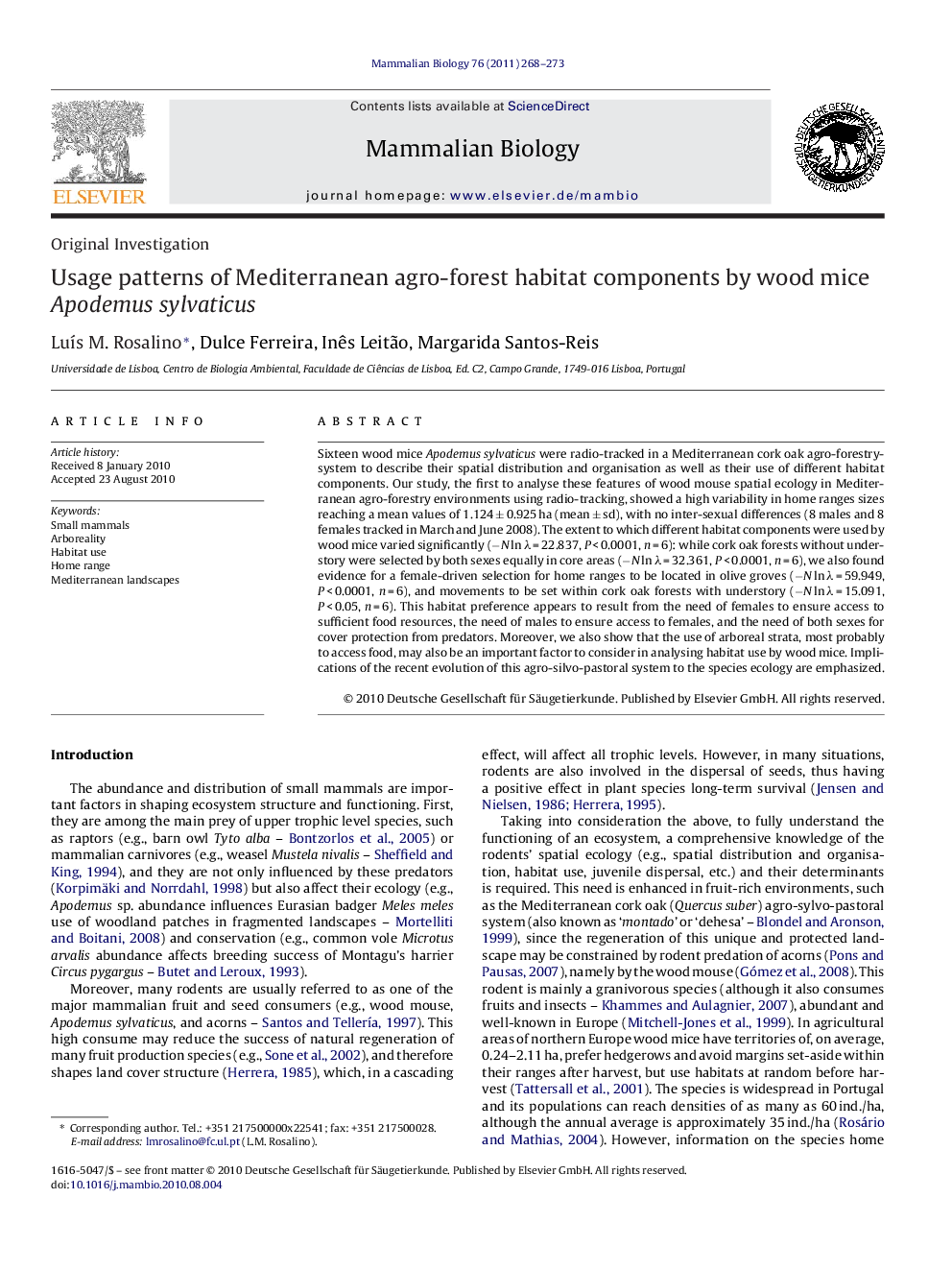| Article ID | Journal | Published Year | Pages | File Type |
|---|---|---|---|---|
| 2193744 | Mammalian Biology - Zeitschrift für Säugetierkunde | 2011 | 6 Pages |
Sixteen wood mice Apodemus sylvaticus were radio-tracked in a Mediterranean cork oak agro-forestry-system to describe their spatial distribution and organisation as well as their use of different habitat components. Our study, the first to analyse these features of wood mouse spatial ecology in Mediterranean agro-forestry environments using radio-tracking, showed a high variability in home ranges sizes reaching a mean values of 1.124 ± 0.925 ha (mean ± sd), with no inter-sexual differences (8 males and 8 females tracked in March and June 2008). The extent to which different habitat components were used by wood mice varied significantly (−N ln λ = 22.837, P < 0.0001, n = 6): while cork oak forests without understory were selected by both sexes equally in core areas (−N ln λ = 32.361, P < 0.0001, n = 6), we also found evidence for a female-driven selection for home ranges to be located in olive groves (−N ln λ = 59.949, P < 0.0001, n = 6), and movements to be set within cork oak forests with understory (−N ln λ = 15.091, P < 0.05, n = 6). This habitat preference appears to result from the need of females to ensure access to sufficient food resources, the need of males to ensure access to females, and the need of both sexes for cover protection from predators. Moreover, we also show that the use of arboreal strata, most probably to access food, may also be an important factor to consider in analysing habitat use by wood mice. Implications of the recent evolution of this agro-silvo-pastoral system to the species ecology are emphasized.
